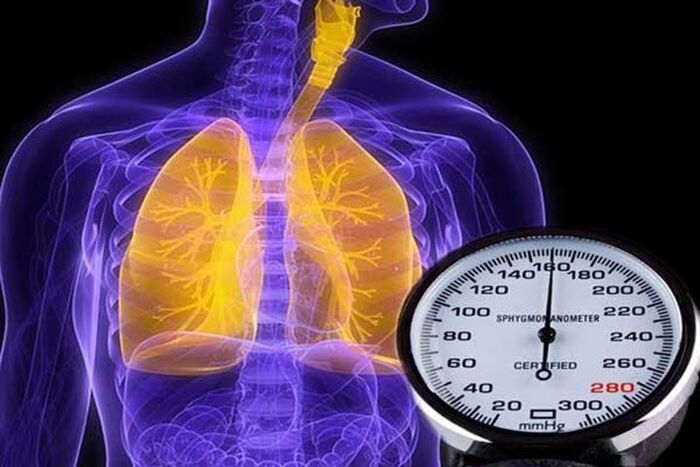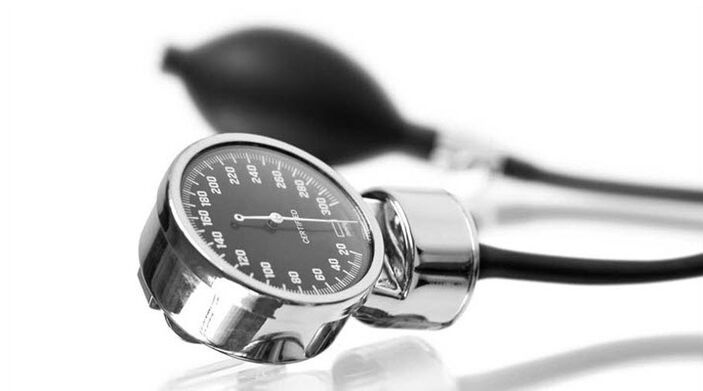According to medical statistics, hypertension is a common disorder of the cardiovascular system. The development of hypertension has a negative effect on blood vessels: it reduces elasticity, increases fragility. Such processes lead to internal bleeding. Often, high blood pressure leads to the progression of fatal pathological conditions: cardiac ischemia, myocardial infarction or stroke.
Early diagnosis of hypertension, timely prescribed treatment allow the patient to avoid the manifestation of changes that can significantly worsen health indicators or lead to death. People over the age of forty should have their blood pressure monitored regularly, have a blood pressure monitor at home, and seek medical attention if other symptoms of the disease are found.
Causes of hypertension
What can cause hypertension in humans? What factors can provoke its development? Such questions remain relevant, they are asked to doctors by people who are interested in their health. Prolonged high blood pressure can cause certain changes in the functioning of the human body. The following diseases are affected:
- the condition of the vessels that accompanies atherosclerosis;
- heart failure;
- diabetes;
- gout;
- rheumatoid arthritis;
- renal pathology.

Other factors contribute to the development of hypertension. The cause of the disease is related to:
- heredity: the pathologies are most susceptible to children whose parents are diagnosed with hypertension;
- age (over 45 years) and gender (morbidity among men is higher);
- overweight and obesity, occurring for various reasons (functional disorders of the body, low mobility, eating foods high in animal fats, salt, regular overeating);
- skull and brain injury;
- cholesterol levels significantly elevated from normal;
- hormonal changes in the female body during menopause;
- alcohol abuse, smoking, addiction to caffeinated beverages;
- complications after infectious or viral diseases;
- neglect of walks in favor of staying indoors without fresh air.
High blood pressure accompanies patients for whom an unstable emotional state is the norm. Psychological discomfort, attack of aggression or rage, stress, tragedies in personal life increase the values of indicators.
Classification and stages of the disease
Two methods are used to classify the hypertensive problem - by etiology (cause) and by degree (stage) of development.
In a situation where the nature of high blood pressure cannot be reliably determined, the doctor will diagnose primary (essential) hypertension. This is the most common, seen in 95% of patients. The remaining 5% of people have a secondary form of the disease, which is an additional manifestation of other pathologies that require their treatment.
Three stages of the process will differ in symptoms and severity: mild, moderate and severe.
Mild hypertension is characterized by an increase in blood pressure within:
- systolic blood pressure from 140 to 159 mm Hg. str . ;
- diastolic blood pressure from 90 to 99 mm Hg. Art.
The course of the disease at this stage is not complicated by the pathology of the internal organs, it often proceeds without pronounced symptoms.
In moderate disease, blood pressure values are in the range of 160-179 / 100-109 mm Hg. Art. The patient's heart and kidneys begin to suffer, the condition of the retina changes, atherosclerotic plaques form in the vessels. In most cases, functional transformations occur imperceptibly.
Severe hypertension of the third degree combines diagnosed pathologies of the heart, brain, organs of vision, vascular system and indicators of blood pressure above 180/110 mm Hg. Art. There is a high risk of hypertensive crisis

Characteristic symptoms
Hypertension in the initial and middle stages may not cause symptoms, which is a dangerous factor for the patient. The main symptom indicating the development of a pathological condition is headache and dizziness. They accompany the patient often and for a long time, occur due to spasm of cerebral vessels, their narrowing. Additional signs are general weakness, fatigue, nausea, tinnitus, veil over the eyes.
A person with hypertension experiences other symptoms of high blood pressure:
- reduced vision, a feeling that the eyes are crushed;
- frequent nosebleeds;
- increased intracranial pressure;
- short-term loss of consciousness;
- instability of emotions, mood swings;
- development of insomnia;
- physical activity causes severe redness of the facial skin;
- vomiting that has no nutritional causes;
- rapid pulse and heart rate;
- change in memory, its deterioration;
- significant swelling of the limbs, face.
Signs of high blood pressure during the development of severe disease are accompanied by complications of the heart and blood vessels: heart failure, arrhythmia, angina pectoris, myocardial infarction. Symptoms of hypertension are combined with renal failure, changes in blood supply to the brain, microstroke, stroke.
The symptoms of hypertension can be present in a patient in different combinations, have a different nature of manifestation: stable, strong, one-time. The peculiarity of the disease is that a person is dominated by high blood pressure.

Diagnosis
Sufficient grounds for a complete examination of the patient in case of suspicion of hypertension are three cases of elevated blood pressure within one month. This symptom cannot be ignored.
The patient is advised to take self-measurements with a tonometer several times a day and record the results. In the conditions of a medical institution such a diagnostic method is used as daily monitoring of blood pressure. The instruments record pressure values during the day (every 15 minutes) and at night (twice an hour).
To determine the change in body functions, clinical blood and urine tests prescribed to the patient allow. Indicators of cholesterol, protein, potassium, calcium, glucose, hemoglobin, lipid spectrum are important in diagnosing the disease.
The presence of signs characteristic of high blood pressure and the development of hypertension is indicated by the malfunction of the heart muscle. The following methods are used for its research:
- auscultation - with the help of a phonendoscope the sounds produced by the organ are heard, the rhythm of its work is observed;
- ECG - decoding the electrocardiogram taken by the patient allows a detailed assessment of cardiac function over a period of time;
- ultrasound and echocardiographic diagnostic methods reveal defects of the myocardium and valves, allow to compare the size of the atria, ventricles;
- Doppler examination makes it possible to assess the condition of the vessels;
- arteriography - the result of the observation informs about the changes in the walls of the arteries, their damage, the location of cholesterol plaques.
If hypertension is suspected, examination of the fundus, ultrasound diagnosis of the kidneys and renal arteries, adrenal glands is prescribed.

Therapeutic measures
Treatment of hypertension involves the use of drugs that can keep blood pressure close to normal. In cases where a secondary form of pathology is identified, therapy includes elimination of the disease, the main cause of increased pressure in the patient.
List of drugs
Eliminating high blood pressure will help to take medication strictly according to the doctor's instructions. The first degree of hypertension does not require medical treatment, the patient is recommended a change in lifestyle and usual diet. Moderate and severe forms of the disease should be controlled with the help of groups of drugs:
- diuretics (thiazide) contribute to the natural withdrawal of fluid accumulated in the patient's tissues, reduce their swelling, which leads to increased vascular patency;
- beta-blockers correct heart rate;
- sartans - a single dose is able to normalize blood pressure, maintaining the result for one day;
- calcium antagonists correct cardiac activity, are prescribed for severe angina pectoris, arrhythmias;
- angiotensin-converting enzyme inhibitors dilate blood vessels, prevent spasms;
- alpha-adrenergic blockers improve the condition of peripheral vessels.
The doctor prescribes a certain drug or a combination of them for each patient, taking into account the general condition of the patient, concomitant diseases.
Providing first aid at home
Cases of uncontrolled increase in blood pressure in a patient with hypertension are not uncommon. In case of sudden deterioration of his condition, relatives are advised to call an ambulance immediately. The following steps must be taken before her arrival:
- eliminate panic in patients with hypertension, calm him down: a stressful situation helps to increase blood circulation, increase blood pressure;
- the condition can be improved by taking herbal sedatives (Corvalol, motherwort, valerian);
- it is important to sit comfortably, it is recommended to sit in a comfortable position, lean back, relax;
- it is necessary to apply a cold compress to the front area, while the feet should be warm (you can use heating pads or mustard plasters);
- urgent need to take the medicine recommended by the doctor;
The process of first aid is accompanied by the removal of blood pressure readings (every 10 minutes), the results of the measurement should be recorded in writing, after which the sheet should be handed over to doctors.
General prevention tips
Prevention of hypertension consists of a set of measures. Doctors advise to change your lifestyle, diet, use folk remedies to normalize the condition.
The hospital will point out the extreme harm to hypertensives from alcohol and smoking and will advise them to quit. Moderate physical activity, leisurely walks in nature, light work are shown.
Improving the condition of patients contributes to the transition to a special diet. Pickles and smoked meats, fried foods, fatty meats should be avoided, and fresh bread should not be eaten. Vegetables, fruits, herbs, dietary meat and dairy products, cereals (rice, buckwheat), legumes should be the main ingredients of the new menu. Patients should consume salt, sugar and fluids in moderation.
Folk remedies known for a long time will not allow the pressure to rise. Infusions and decoctions based on medicinal herbs, bee products, vegetables or nuts and other components are selected individually in the required proportions.



























